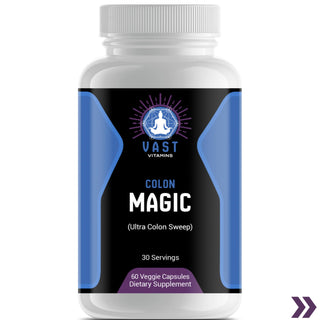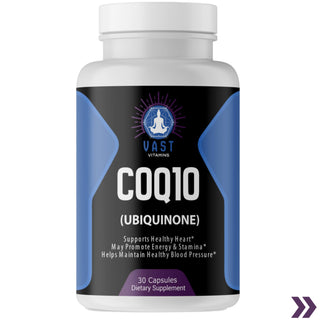Key Takeaways: D-Mannose vs. Antibiotics for UTI Treatment
|
Urinary tract infections (UTIs) are a common health issue, particularly among women, with many individuals experiencing recurrent infections. Historically, antibiotics have been the standard treatment for UTIs, but growing concerns about antibiotic resistance have prompted exploration of alternative remedies. One such alternative is D-mannose, a natural sugar that has shown promise in preventing and treating UTIs. In this article, we will compare the efficacy of D-mannose and antibiotics, explore their mechanisms, and examine the potential for D-mannose as a viable alternative to antibiotics.
What is D-Mannose?
D-mannose is a simple sugar, structurally similar to glucose, that is found in small amounts in fruits like cranberries, apples, and peaches. Unlike glucose, however, D-mannose is not significantly metabolized by the body, meaning that it is quickly absorbed into the bloodstream and excreted via the urinary tract. This unique feature is what makes it particularly interesting for UTI prevention and treatment, as it can directly interact with bacteria in the urinary system without significant metabolic interference.

How D-Mannose Works Against UTIs.
The primary mechanism by which D-mannose helps prevent and treat UTIs is by inhibiting the adhesion of bacteria to the walls of the urinary tract. Many UTIs are caused by *Escherichia coli* (E. coli), a type of bacteria that binds to the bladder and urinary tract walls using tiny, hair-like structures called fimbriae. These fimbriae bind to mannose receptors on the bladder walls, allowing the bacteria to establish an infection.When D-mannose is present in the urinary tract, it competes with the bladder's mannose receptors by binding to the bacteria’s fimbriae. This action prevents the bacteria from adhering to the bladder wall, and the bacteria are then flushed out with the urine. This process is especially useful in preventing recurrent infections, as it can reduce bacterial colonization without the need for antibiotics.
Comparison to Traditional Antibiotics.
Antibiotics are commonly prescribed to treat UTIs, as they directly target and kill the bacteria responsible for the infection. While effective, antibiotics come with several downsides, including side effects such as gastrointestinal discomfort, allergic reactions, and the potential for yeast infections due to the disruption of the body's natural bacterial flora.A more pressing issue is the increasing prevalence of antibiotic resistance. The overuse of antibiotics has led to the development of bacteria that are resistant to these drugs, making UTIs harder to treat over time. According to studies, recurrent UTIs treated with antibiotics are particularly concerning, as repeated exposure to antibiotics increases the likelihood of developing resistant bacterial strains.
D-mannose, on the other hand, does not kill bacteria directly but prevents their ability to colonize the urinary tract. This means it avoids contributing to antibiotic resistance, making it a potentially safer and more sustainable option for long-term UTI management.
Effectiveness of D-Mannose in Clinical Settings.
Several studies have investigated the effectiveness of D-mannose in preventing and treating UTIs. A randomized clinical trial published on pubmed found that D-mannose significantly reduced the recurrence of UTIs in women compared to a placebo group. Another meta-analysis reported that women who took D-mannose had a lower risk of recurrent infections compared to those on placebo or no treatment.
However, the evidence is not unanimous. Some studies, particularly smaller trials, have not found significant differences between D-mannose and placebo in terms of symptom relief or infection prevention. Despite these mixed results, the overall trend in clinical research suggests that D-mannose can be an effective preventive measure, especially for individuals prone to recurrent UTIs.

Safety and Side Effects of D-Mannose.
One of the main advantages of D-mannose is its favorable safety profile. Since it is a naturally occurring sugar, it is generally well-tolerated by most individuals. The most commonly reported side effects include mild gastrointestinal discomfort, such as bloating and diarrhea, but these are typically infrequent and not severe.Long-term studies on the safety of D-mannose are limited, but current research suggests that it can be safely used over extended periods without significant adverse effects. However, people with certain conditions, such as diabetes, should consult a healthcare provider before using D-mannose, as it is a sugar and could potentially impact blood sugar levels.
Practicality of D-Mannose Use.
For those considering D-mannose as a UTI treatment or preventive measure, understanding its administration and dosage is key. D-mannose is available in both powder and capsule form, making it easy to integrate into daily routines. A typical dosage for preventing UTIs is 500-2000 mg per day, depending on individual needs and the severity of the infection. For active infections, higher doses may be recommended, often spaced throughout the day.One major advantage of D-mannose is its convenience and lack of significant side effects, which enhances patient compliance. Unlike antibiotics, which can cause discomfort or require strict regimens, D-mannose is relatively easy to take and doesn’t disrupt daily life, making it an attractive option for long-term UTI prevention.
Role of D-Mannose in UTI Management Strategies.
While D-mannose shows promise as a standalone preventive agent, it can also be integrated with conventional UTI treatments. For example, patients may use D-mannose as a preventive measure while keeping antibiotics as a backup option for more severe infections. Some healthcare providers also recommend combining D-mannose with probiotics or cranberry supplements to enhance its efficacy in maintaining urinary tract health.Given the ongoing concerns over antibiotic resistance, there is a growing interest in incorporating D-mannose into broader UTI management strategies. Many experts believe that a combination of lifestyle changes, non-antibiotic treatments, and selective antibiotic use may offer the most effective long-term approach to managing recurrent UTIs.
Future Perspectives: Expanding Applications Beyond UTIs.
Research into D-mannose is still in its early stages, and there are many potential applications for this natural sugar beyond UTIs. For instance, preliminary studies suggest that D-mannose may have benefits for people with certain metabolic disorders or gastrointestinal conditions, although more research is needed to confirm these effects.Ongoing clinical trials are investigating the potential of D-mannose to prevent infections caused by other types of bacteria and its role in treating conditions like bacterial vaginosis. As more research becomes available, it’s possible that D-mannose will become a more widely recognized treatment option for various bacterial infections.
Conclusion: D-Mannose in Urinary Tract Infection Management.
As concerns about antibiotic resistance continue to grow, the search for alternative UTI treatments has led to the exploration of non-antibiotic options like D-mannose. While antibiotics remain a cornerstone of UTI treatment, especially for severe cases, D-mannose offers a promising preventive option for those prone to recurrent infections. Its ability to inhibit bacterial adhesion without contributing to antibiotic resistance makes it an attractive option for long-term management.
For many individuals, D-mannose can serve as an effective supplement to traditional treatments, reducing the need for antibiotics and offering a safer, more sustainable approach to UTI prevention. However, further research is needed to fully understand its long-term efficacy and expand its potential applications. As the medical community continues to explore non-antibiotic strategies, D-mannose is likely to play an increasingly important role in urinary tract health.
FAQ: D-Mannose vs. Antibiotics for UTI Treatment
1. Can you take D-Mannose instead of antibiotics for UTIs?
Yes, D-mannose can be used as an alternative to antibiotics, especially for preventing recurrent UTIs. It works by preventing bacteria from adhering to the urinary tract walls, reducing infection risk. However, for severe or complicated infections, antibiotics are often necessary.
2. Is D-Mannose a natural antibiotic?
No, D-mannose is not an antibiotic. It is a naturally occurring sugar that helps prevent bacterial adhesion to the urinary tract, but it does not kill bacteria like antibiotics do.
3. What are the disadvantages of D-Mannose?
While generally safe, D-mannose may cause mild gastrointestinal side effects such as bloating or diarrhea. It is also less effective in treating active infections compared to antibiotics, making it better suited for prevention rather than treatment.
4. How long does it take for D-Mannose to work?
For preventing UTIs, D-mannose can start working almost immediately as it prevents bacterial adhesion. When used during an infection, it may take a few days for symptoms to improve, depending on the severity of the infection.
5. Can I take D-Mannose every day?
Yes, D-mannose can be taken daily as a preventive measure against UTIs, especially for individuals prone to recurrent infections. Typical preventive dosages range from 500-2000 mg per day.
6. Does D-Mannose interact with antibiotics?
There is no known harmful interaction between D-mannose and antibiotics, meaning you can use both concurrently. In fact, some people use D-mannose as a complementary treatment alongside antibiotics.
7. Is D-Mannose effective for all types of UTIs?
D-mannose is particularly effective against UTIs caused by E. coli, which is responsible for about 90% of UTIs. It may be less effective for UTIs caused by other bacteria.
8. Are there any long-term safety concerns with D-Mannose?
Currently, there are no major concerns regarding the long-term use of D-mannose. It is considered safe for ongoing use, especially for preventing recurrent UTIs. However, individuals with certain conditions like diabetes should consult a healthcare provider before using it regularly.
9. How does D-Mannose compare to cranberry supplements?
Both D-mannose and cranberry supplements work by preventing bacterial adhesion in the urinary tract, but studies suggest that D-mannose may be more effective in reducing UTI recurrence.
10. Should I see a doctor before taking D-Mannose?
While D-mannose is available over-the-counter and is generally safe, it's always a good idea to consult with a healthcare provider, especially if you have underlying health conditions, are pregnant, or are currently experiencing a severe UTI.














































































































